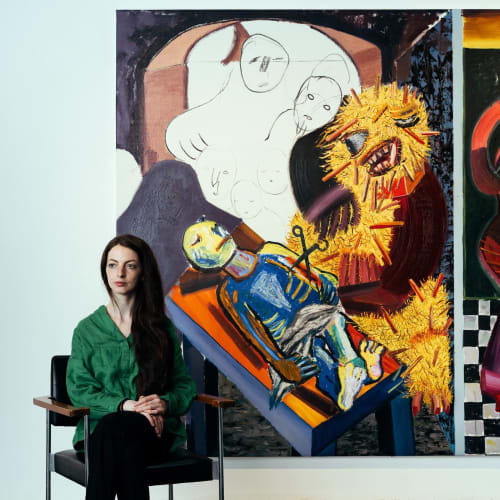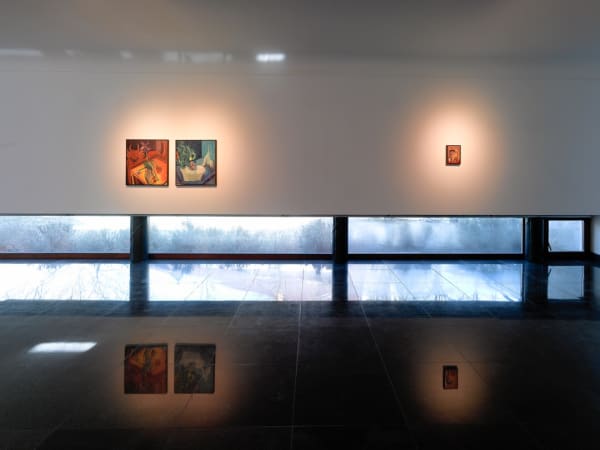‘My paintings coagulate scenes that do not necessarily subscribe to an aesthetic attitude, but delineate the search for a very personal process of making the image. For me, this project is a complex challenge in seeking and acquiring an own style of state expression through an artistic approach that helps me to reach the unique way of releasing my gesture in response to the chosen subject. The images taken from them are de-structured and re-composed to create various, magical and dynamic compositions, completing the collages through the basics of pictorial-gesture, line, spot and shape.In my works I discuss the problems related to magic, dream, form and composition, metamorphosis of the perception filters, the characters rendered by me being deformed, with strange atypical faces. I like to reinterpret the facts of reality into a world of mine, full of magic, beautiful, ugly, through deformations, elongations, twists and turns sending them into a grotesque visual area. I want to suggest the atmosphere of dreams, to express an emotion without resorting to narrative clichés. What I am interested in is the absurd, the exploration of the limits of reality, which can bring about an individual reality.’ – artist Tincuța Marin
”Standing before the works of Tincuța Marin is, in a way, like stopping before the moment preceding a state of coagulation, as before a process that seems endless, a scar formation, which metaphorically, is locked in a perpetual state of deconstruction and reconstruction.
The pictoral „space” thus revealed proves fragile and in permanent upheaval, unbound by neither reality, nor dreams, because it is the scene of a dance brimming with virtuosity, following both the rhythm of perception, as well as that of a more profound understanding of being, a place of probing a turbid complexity.
The resulting visual creation is a radical one – the seedling of a true pictoral gesture, manifested in line, form and colour. The storkemanship’s softness often turns rough, just as the sinuous lines make room for a striking angularity. The cognitive filters, faced with the construction of such a particular world, revert to morphic structures that move the painting’s fluid veil, in spite of its powerful material, static and elegiac presence.
Such an energy must not be interpreted as a parallel world, or as a world comfortable in its commotion, it constitutes Tincuța Marin’s frame for viewing reality, or, more accurately put, to investigate the relationship between elements and the subtle interconnectivity between all the visible parts forming the binding material to a swirling cosmos. Without a doubt, this expressive force is marked to such a degree by the colour of meat, that it seems like we are part to a coagulated dream, whose edges coincide precisely with the perimeter of its cut.
In the words of French philosopher Maurice Merleau-Ponty, the essential notion of meat appears in the chiasmatic weaving of the visible with the invisible, as a place of transit and differentiation that sees both involved. In fact, as a manifestation in accomplishing this ontological transit which moves effortlessly from the body of light to the subject’s body and back, the visible-corporeal world reveals itself encrused with the invisible-linguistic world.
As such, etymologically, the term that designates the Dianthus caryophyllus species, which lends its name to the exhibition, stems from the Latin genitive “carnis”, describing the original colour of the flower: its original meaning is connected to the divine and its embodiment. What phase better represents the dynamic intermediary if not that of the above mentioned coagulation? The binomial in play, however, is not related to something transcendental, but rather is wholly involved in changes of life. A composed, mottled coagulation that, like a wreath of carnations, whispers about the jagged discontinuity and complexity of being itself.” – curator Domenico de Chirico
















